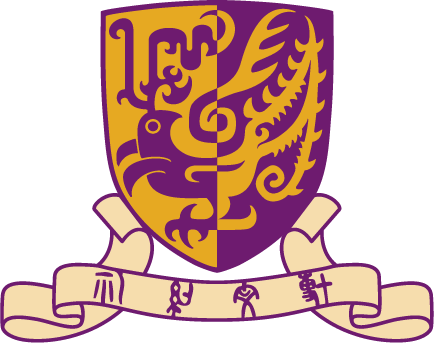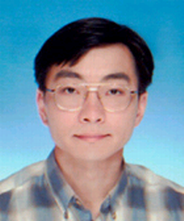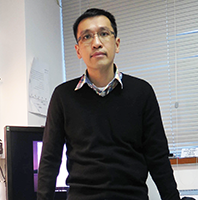Education
| 1988 | PhD, Univ Manchester, UK |
| 1986 | MPhil (Biology), The Chinese University of Hong Kong, Hong Kong |
| 1985 | Postgrad Diploma (Microbiology and Biotechnology), Univ Tokyo and Osaka Univ, Japan |
| 1983 | BSc (Biology), The Chinese University of Hong Kong, Hong Kong |
Position
1993-present Associate Professor (Dept of Biology, The Chinese University of Hong Kong, Hong Kong)
1992 Scientific Officer (Hospital Authority, Hong Kong)
1992 Education Officer (Hong Kong AIDS Foundation, Hong Kong)
1989-1991 Lecturer (Dept of Biology, Hong Kong Baptist College, Hong Kong)
1989 Lecturer (Dept of Applied Biology, Hong Kong Polytechnic, Hong Kong)
1988 Research Associate (Dept of Biology, The Chinese University of Hong Kong, Hong Kong)
Research Interests
- Bioremediation using fungi
- Conversion of wastes into fungal products, including mushrooms
- Diversity and life strategy of fungi
- Mushroom development and genetics
Representative Publications
- Lau, K. L., Tsang, Y. Y., and Chiu, S.W. (2003) Use of spent mushroom compost to bioremediate PAH-contaminated samples. Chemosphere 52:1539-1546.
- Law, W. M., Wai, L. M., Lau, W. N., Lo, K. L. and Chiu, S.W. (2003) Removal of biocide pentachlorophenol in water system by the spent mushroom compost of Pleurotus pulmonarius. Chemosphere 52:1531-1537.
- Moore, D. & Chiu, S.W. (2001) Filamentous fungi as food. In Exploitation of Filamentous Fungi. Eds. S.B. Pointing & D. Hyde, pp. 223-252. Fungal Diversity Press: Hong Kong.
- Chiu, S.W., Law, S.C., Ching, M.L., Cheung, K.W. & Chen, M.J. (2000) Themes for mushroom exploitation in the 21st century: sustainability, waste management and conservation. Journal of General and Applied Microbiology 46:1-14.
- Chiu, S.W., Wang, Z.M., Leung, T.M. & Moore, D. (2000) Nutritional value of Ganoderma extract and assessment of its genotoxicity and antimutagenicity using comet assays of mouse lymphocytes. Food and Chemical Toxicology 38:173-178.
- Chiu, S.W. and Moore, D. (1999) Sexual development in higher fungi. In: Experimental Molecular Mycology (Eds. Oliver, R. and Schweizer, M.), pp.231-271. Cambridge University Press, Cambridge, U.K.
- Chiu, S.W., Wang, Z.W., Chiu, W.T., Lin, F.C. and Moore, D. (1999) An integrated study of individualism in Lentinula edodes in nature and its implication for cultivation strategy. Mycological Research 103:651-660
- Chiu, S.W., Chan, Y.H., Law, S.C., Cheung, K.T. and Moore, D. (1998) Cadmium and manganese in contrast to beneficial calcium reduce yield and nutritional values of the edible mushroom Pleurotus pulmonarius. Mycological Research 102: 449-457
- Chiu, S.W., Ching, M.L., Fong, K.L. and Moore, D. (1998) Spent oyster mushroom substrate performs better than many mushrooms for removal of biocide pentachlorophenol. Mycological Research 102: 1553-1562.
- Chiu, S.W., Ma, A.M., Lin, F.C. and Moore, D. (1996) Genetic homogeneity of cultivated strains of shiitake (Lentinula edodes) used in China as revealed by the polymerase chain reaction. Mycological Research 100:1393-1399.
- Chiu, S.W. and Moore, D. (Eds) (1996) Patterns in Fungal Development. Cambridge University Press: Cambridge, U.K.
- Chiu, S.W., Chen, M.J. and Chang, S.T. (1995) Differentiating homothallic mushroom Volvariella by AP-PCR and RFLPs. Mycological Research 99:333-336.
- Chiu, S.W. and Poon, Y.K. (1993) Submerged production of Monascus pigments. Mycologia 85:214-218.
- Chiu, S.W. and Moore, D. (1993) Cell form, function and lineage in the hymenia of Coprinus cinereus and Volvariella bombycina. Mycological Research 97:221-226.
- Chiu, S.W. (1993) Evidence for a haploid life cycle in Volvariella volvacea by microspectrophotometric measurements and observation of nuclear behaviour. Mycological Research 97:1481-1485.
Research Grants
Innovation and Technology Fund
2002-2004 Biotechnological Improvement of a microbial cultivar and evidence-based diversification of Microbial products - HK$3,190,000 (PI)
Hong Kong University Grant Council (UGC) Area of Excellence (AoE)
2000-2002 AoE Project of the Plant and Fungal Biotechnology - Fermentative Production of Monascus Metabolites. HK$700,000
Research Grants Council (RGC) Earmarked Grants
1997-1999 Screening natural population of Chinese shiitake strains for present and future commercial potential. HK$686,800
Research Grants Council (RGC) University and Polytechnic Granting Council Earmarked Grants
1994-1996 A study on the diversity-generating mechanism on self-fertile mushroom, Volvariella volvacea. HK$803,000
1991-1994 Protoplasts and molecular studies on Volvariella volvacea. HK$495,000
Croucher Foundation Research Funds
1990-1993 Establishment of the genomic library, linkage map and germplasm bank for Lentinula edodes. HK$627,000
UK/HK Research Scheme, The British Council
1998-1999 A confocal laser scanning microscopic analysis on the gill development of a mushroom
1996-1997 An electron microscopic analysis of the effect of metallic pollutants on fungal propagation
Direct Grants of the Research Committee, CUHK
2000-2001 Molecular, Genetical and Physiological Characterization of Hong Kong Lingzhi, Ganoderma lucidum
1999-2000 Use of spent mushroom compost to treat pesticide pentachlorophenol
1996-1997 Dissecting the carbon metabolism in fruiting of oyster mushroom
1995-1996 Feasibility of using spent mushroom compost to treat wastewater and solid waste
1994-1995 A study on the toxic effects of metal pollutants on oyster mushrooms
1989-1990 Immunofluorescence studies on the organization of microfilaments and intermediate filaments in animal cells and in fungi during meiosis
Mainline Research Scheme, CUHK
1996-1997 A molecular analysis on the ecological impact of an introduced isolate on the natural population of Armillaria
Professional Activities
Appointments in the following Professional Organizations:
Member of the Editorial Board of the International Journal "Journal of General and Applied Microbiology" (1999-present)
Session chairperson and invited speaker in "15th International Congress on the Science and Cultivation of Edible Fungi" held in the Netherlands (2000)
Invited speaker in British Mycological Society "Millennium meeting on Tropical Fungi" held in UK (2000)
Member of the Editorial Board of the International Journal "Mycological Research" (1995-1999)
Course Instructor of the Training Course in "Advanced Mushroom Biotechnology" (Center for International Services to Mushroom Biotechnology) (1995)
Member of the Executive Committee, International Mycological Association (2002 onwards)
Membership in the following Professional Organizations:
American Society of Microbiology
British Mycological Society
World Wide Fund for Nature Hong Kong
Standard Board, Hong Kong Organic Resource Centre








